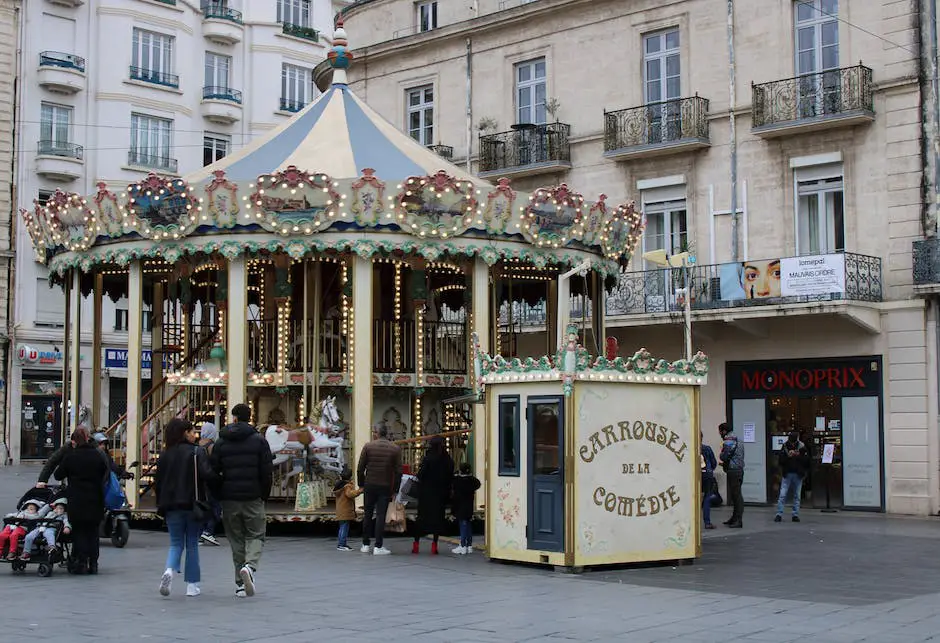
Ah, Montpellier – a city where the whispers of history meet the bold statements of contemporary design. It’s a place where every cobblestone and corner tells a story, and if you’re anything like me, you’ll find yourself utterly enchanted by the architectural tapestry that weaves together centuries of innovation and artistry. Let’s embark on a journey through time, exploring how Montpellier’s architecture has evolved from its medieval roots to the modern marvels that stand today.
The Medieval Beginnings
Strolling through the historic Ecusson district, it’s easy to get lost in the labyrinth of narrow streets that echo the medieval past. Here, the architecture is a time capsule, with the Saint Pierre Cathedral standing as a sentinel to history. Its imposing Gothic structure, complete with flying buttresses and stained glass, transports you back to the 14th century when Montpellier was a scholarly center of the Mediterranean.
Renaissance Flourishes
As the Renaissance bloomed, Montpellier embraced the cultural revival. The elegant mansions, known as ‘hôtels particuliers,’ with their grand courtyards and ornate facades, began to dot the cityscape. The Hôtel de Varennes, with its intricate stonework, is a testament to the craftsmanship of the time. These structures were the playgrounds of the wealthy, showcasing their affluence through architecture.
Classical Influences
Fast forward to the 17th and 18th centuries, and you’ll notice a shift towards classical grandeur. The Promenade du Peyrou offers a panoramic view of this era’s influence. The majestic Arc de Triomphe, dedicated to Louis XIV, stands proudly at the end of the promenade, flanked by symmetrical rows of trees. It’s a slice of Parisian style, right in the heart of Montpellier.
The Modernist Movement
As the 20th century rolled in, so did modernism. Architects like Le Corbusier left their indelible mark on the city. The new neighborhoods, with their functional yet aesthetic designs, reflected the changing times. The Antigone district is a prime example, where neoclassical meets modernist styles. It’s a bold statement of harmony and contrast, much like the city itself.
Contemporary Creations
Today, Montpellier continues to push the envelope with cutting-edge designs. The recent development of the Port Marianne district showcases the city’s commitment to sustainable and innovative urban planning. The RBC Design Center, with its sleek glass facade and minimalist lines, is a beacon of contemporary architecture, drawing design enthusiasts from around the globe.
Montpellier’s Parks and Public Spaces
But let’s not forget the green spaces that breathe life into the city’s architectural landscape. The Jardin des Plantes, France’s oldest botanical garden, is a living museum of horticulture and design. Its carefully curated plant collections are framed by classic greenhouses and ornamental statues, creating a serene escape from the urban hustle.
FAQs
- How has Montpellier’s architecture influenced modern design?
Montpellier’s blend of historical and contemporary architecture has become a blueprint for urban development. Its ability to harmonize different styles inspires architects worldwide to create spaces that respect the past while embracing the future.
- Can you visit the historical buildings in Montpellier?
Absolutely! Many of Montpellier’s historical buildings are open to the public. Walking tours are a fantastic way to delve into the city’s rich architectural heritage.
- What makes Montpellier’s architecture unique?
It’s the seamless integration of different architectural periods, each adding its own layer to the city’s identity. This blend creates a unique visual narrative that’s distinctly Montpellier.
Conclusion
In conclusion, Montpellier’s architecture is a dynamic chronicle of the city’s evolution. From the Gothic spires of the Saint Pierre Cathedral to the sleek lines of the RBC Design Center, each era has contributed to the city’s distinctive skyline. The Jardin des Plantes, with its harmonious blend of nature and design, epitomizes the city’s architectural ethos. Montpellier’s architectural journey is not just about buildings; it’s about the stories they tell and the legacy they leave behind. As we’ve explored the city’s past and present, it’s clear that Montpellier will continue to be a canvas for architectural expression for years to come.
For those seeking to understand how architecture can narrate the story of a city’s past while paving the way for its future, look no further than Montpellier. Its parks and public spaces, like the Jardin des Plantes, are not just areas of natural beauty but also landmarks of design that have evolved alongside the city. Montpellier’s architecture is a testament to the city’s resilience and creativity, making it a must-visit destination for anyone passionate about the art of building.